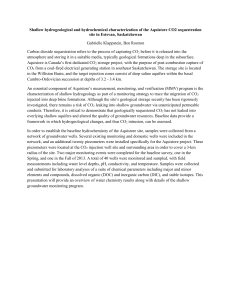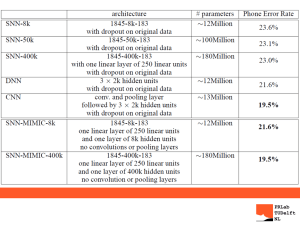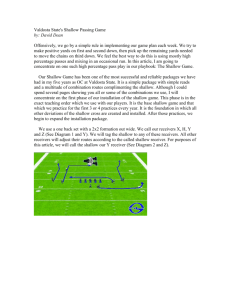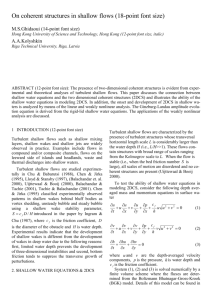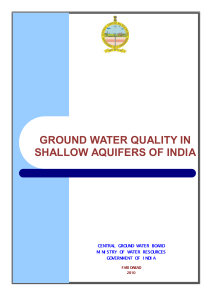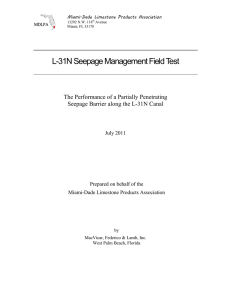Material properties and microstructure from
advertisement
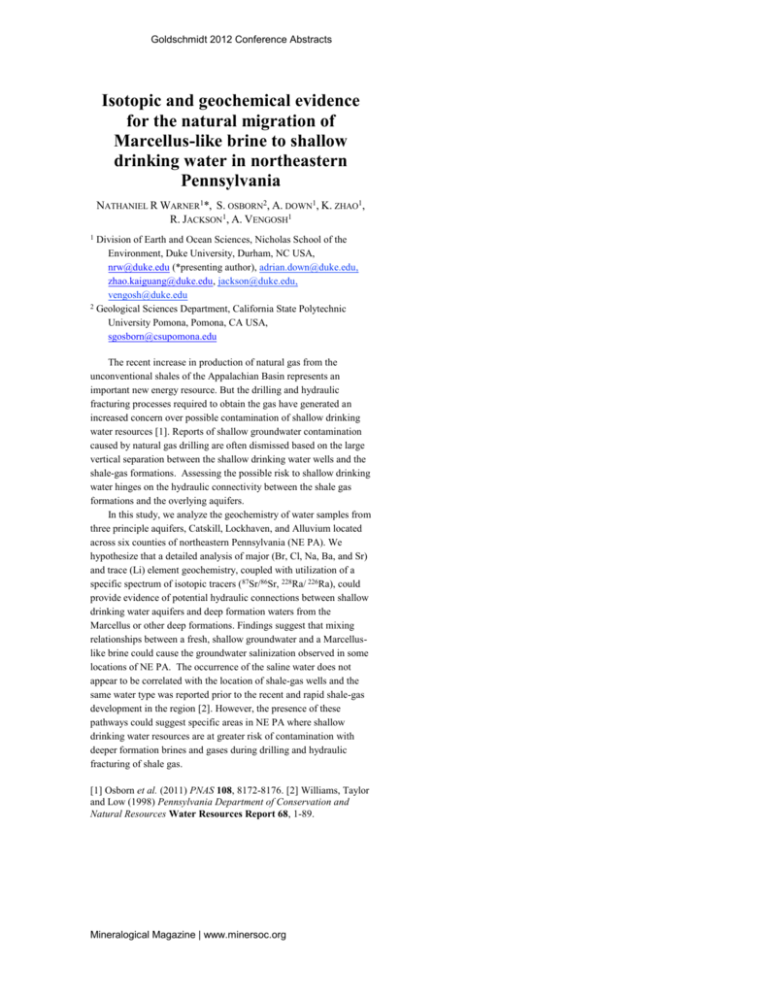
Goldschmidt 2012 Conference Abstracts Isotopic and geochemical evidence for the natural migration of Marcellus-like brine to shallow drinking water in northeastern Pennsylvania NATHANIEL R WARNER1*, S. OSBORN2, A. DOWN1, K. ZHAO1, R. JACKSON1, A. VENGOSH1 1 Division of Earth and Ocean Sciences, Nicholas School of the Environment, Duke University, Durham, NC USA, nrw@duke.edu (*presenting author), adrian.down@duke.edu, zhao.kaiguang@duke.edu, jackson@duke.edu, vengosh@duke.edu 2 Geological Sciences Department, California State Polytechnic University Pomona, Pomona, CA USA, sgosborn@csupomona.edu The recent increase in production of natural gas from the unconventional shales of the Appalachian Basin represents an important new energy resource. But the drilling and hydraulic fracturing processes required to obtain the gas have generated an increased concern over possible contamination of shallow drinking water resources [1]. Reports of shallow groundwater contamination caused by natural gas drilling are often dismissed based on the large vertical separation between the shallow drinking water wells and the shale-gas formations. Assessing the possible risk to shallow drinking water hinges on the hydraulic connectivity between the shale gas formations and the overlying aquifers. In this study, we analyze the geochemistry of water samples from three principle aquifers, Catskill, Lockhaven, and Alluvium located across six counties of northeastern Pennsylvania (NE PA). We hypothesize that a detailed analysis of major (Br, Cl, Na, Ba, and Sr) and trace (Li) element geochemistry, coupled with utilization of a specific spectrum of isotopic tracers (87Sr/86Sr, 228Ra/ 226Ra), could provide evidence of potential hydraulic connections between shallow drinking water aquifers and deep formation waters from the Marcellus or other deep formations. Findings suggest that mixing relationships between a fresh, shallow groundwater and a Marcelluslike brine could cause the groundwater salinization observed in some locations of NE PA. The occurrence of the saline water does not appear to be correlated with the location of shale-gas wells and the same water type was reported prior to the recent and rapid shale-gas development in the region [2]. However, the presence of these pathways could suggest specific areas in NE PA where shallow drinking water resources are at greater risk of contamination with deeper formation brines and gases during drilling and hydraulic fracturing of shale gas. [1] Osborn et al. (2011) PNAS 108, 8172-8176. [2] Williams, Taylor and Low (1998) Pennsylvania Department of Conservation and Natural Resources Water Resources Report 68, 1-89. Mineralogical Magazine | www.minersoc.org

